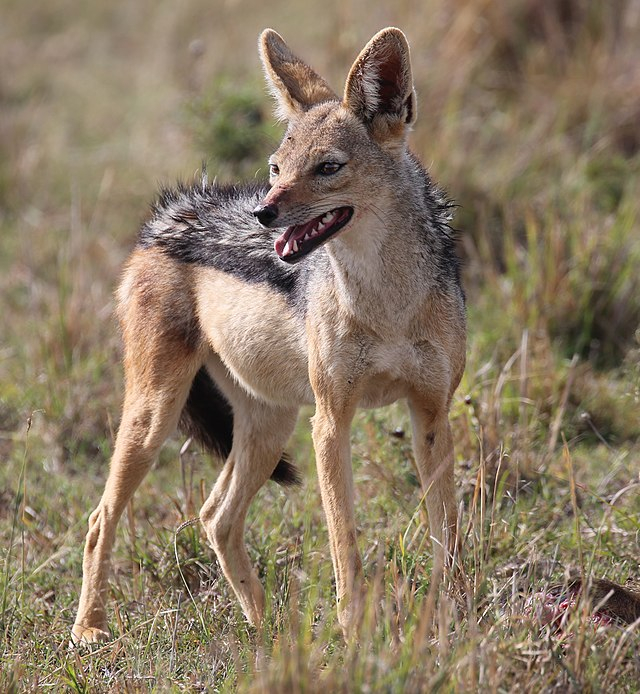Jackal
The jackal, a cunning and adaptable carnivore, stands out as one of the common animals that start with the letter "J." Belonging to the Canidae family, which also includes wolves and domestic dogs, jackals have a distinct appearance and play important roles in various ecosystems.
There are three main species of jackals: the golden jackal (Canis aureus), the black-backed jackal (Canis mesomelas), and the side-striped jackal (Canis adustus). Each species has its own unique characteristics and is distributed across different regions of Africa and parts of Asia.
One of the defining features of jackals is their slender and lightweight build, adapted for swift movements and agile hunting. They typically have a sandy or tan-colored coat, providing effective camouflage in their natural habitats. Jackals possess keen senses, including sharp eyesight and acute hearing, making them proficient hunters and scavengers.
Jackals are highly adaptable and can thrive in a variety of environments, ranging from arid deserts to grasslands and woodlands. They are opportunistic feeders, consuming a diverse diet that includes small mammals, birds, insects, and carrion. Their scavenging behavior plays a crucial role in maintaining the balance of ecosystems by helping clean up carcasses and prevent the spread of diseases.
These carnivores are known for their distinctive vocalizations, including yips, howls, and barks. Vocal communication serves various purposes, such as establishing territory, coordinating group activities, and signaling danger. Jackals are social animals, often forming family groups or pairs to enhance their hunting and survival capabilities.
In some cultures, jackals have earned symbolic significance. In ancient Egyptian mythology, the god Anubis, associated with mummification and the afterlife, is depicted with the head of a jackal. The jackal's presence in folklore and mythology reflects its influence on human imagination throughout history.
















